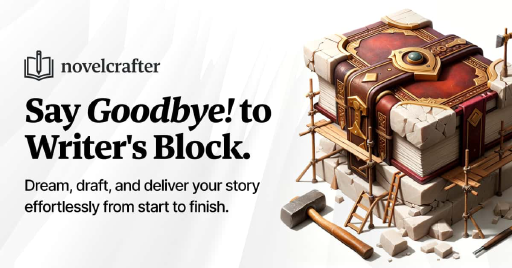Setting the Stage for Suspense
Got a moment? Let’s chat about spinning tales that keep folks glued to your story. Suspense ain’t just a spice; it’s the secret sauce that intensifies the thrill and curiosity readers crave.
What’s the Big Deal with Suspense?
Think of suspense as the emotional rollercoaster of storytelling. It grips your readers, making them sweat bullets over what chaos or wonder lurks on the next page. Creating scenes that keep hearts pounding and minds racing is your ticket to building a strong bond with your audience, making them root for your guys and gals.
Wondering why suspense gets so much love?
| Reason | What it Does |
|---|---|
| Touches Nerves | Cranks up the thrill and the nail-biting moments. |
| Page Burner | Whatever you do, you just gotta keep reading! |
| Shows True Colors | Throws your characters into hot water, revealing who they really are. |
| Pounds Home Messages | Makes the big ideas about fear, trust, and survival hit harder. |
Piece by Piece: Crafting Suspense
Putting the screws to your storyline means mastering a few tricks of the trade. Blend these elements into your tales to crank up the suspense and drama.
-
Characters That Pop: Your characters need personality—flaws and all. Folks should either feel for them or find them so intriguing they can’t look away. If you need a hand with this, check out our piece on creating realistic characters.
-
High Stakes Drama: If your characters ain’t got skin in the game, where’s the thrill? Make ’em pay big time, and your readers will hold their breath.
-
Oh Snap!: Cliffhangers, anyone? Break off your chapters at just the right moment to get readers hanging onto every word.
-
Sneaky Peeks & Misdirections: Toss in hints and tricks—foreshadowing and those sneaky red herrings. They’re pure gold when pulling readers along for the ride. Find out more in our guides on writing suspenseful scenes.
-
Tempo Tactics: Speed up or slow down the plot just right. Fast? You’ve got a nerve-jangling rush. Slow it down, and tension turns up. Adjust pace like a pro, and you’ll see the magic happen.
Using these moves, you’ll weave the kind of suspense that gets folks hooked and eagerly flipping pages. If sharing your tales is the goal, pop over to our advice on improving your writing.
Building Tension
Want readers to grip their e-reader and forget the real world for a hot second? Nailing that intense vibe in your story is a must. By zooming in on the people, risks, and speed of your tale, you’ll have readers glued to the page like it’s the latest binge-worthy series.
Creating Intriguing Characters
Your characters are the heartbeat of your story. Forget picture-perfect heroes—give us messy, lovable rebels. When readers latch onto a character, feeling every twist and turn like it’s happening to their own best friend, you’ve nailed it.
| Flaws | They’ve got them—warts and all. Vulnerabilities are like gold when it comes to tension. |
| Goals | What are they chasing after? This is the key to why they do what they do. |
| Backstory | Dishing out bits of their past gives them depth. You love a backstory, right? |
Curious about making your characters pop? Dive into our guide on creating lifelike characters.
Establishing High Stakes
Keeping your readers on their toes isn’t just about good guys versus bad guys. It’s about the ticking time bomb risks lurking around every corner. Think on this:
 What Poetry Feels Like
What Poetry Feels Like| Scenario | What’s at Risk |
|---|---|
| Life or Death | Choices here mean the difference between seeing another sunrise or not. |
| Personal Loss | Characters might lose a love or sacrifice a dream—it’s gut-wrenching stuff. |
| Moral Dilemma | When someone’s morals get tested, folks go wild! It’s internal battling time. |
Expand those risks in your plot twists with some help from our guide on creating captivating plots.
Using Pacing to Increase Suspense
How fast your story zooms along is the secret sauce of suspense. Shift the gears between full throttle and coasting smoothly to leave readers at the edge of their seats, craving more.
| Technique | How-to |
|---|---|
| Short Sentences | Want a scene to speed up? Keep it snappy. Deliver only what’s needed, quick and dirty. |
| Chapter Cliffhangers | Stop mid-heartbeat, and keep them hanging. Question marks galore! |
| Strategic Slowdowns | Ease off the gas to soak up a juicy moment before flooring it again. |
For a deep dive into sharpening those writing chops, wander over to our article on improving your writing skills.
With characters readers root for, stakes sky-high, and pacing that keeps ’em guessing, you’re on the fast track to writing scenes that thrill, shock, and resonate. Get ready to give your audience a heart-pounding ride!
Crafting Suspenseful Scenes
To really grip your readers, you gotta nail those suspenseful scenes. Building tension, tossing in cliffhangers, and mastering foreshadowing keeps ’em hanging off the cliff (metaphorically, of course).
Setting the Scene for Suspense
First up, you gotta set the mood. Create a backdrop that cranks up the tension and gets your reader prepped for some high-stakes drama. Here’s a handy cheat sheet:
| Element | Description |
|---|---|
| Location | Pick a spot that gives off unsettling vibes—maybe a shadowy alley or an abandoned shack. |
| Weather | Switch up the skies with a thunderstorm or some dense fog to push the unpredictability button. |
| Time of Day | Nighttime ups the creep factor—less light, more mystery. |
| Character Actions | Have your characters act twitchy or overly cautious to emphasize the unease. |
Bring the scene to life with sharp details that punch through normal description. When the reader can almost hear the footsteps behind them or feel the chill in the air, you’re doing it right. For more on taking your descriptions to the big leagues, check out how to write better descriptions.
Incorporating Cliffhangers
Cliffhangers are wickedly effective at leaving readers begging for more like candy at Halloween. Cut a scene off with questions unanswered, and you’ll have them flipping pages till dawn. Try these tricks:
| Strategy | Example |
|---|---|
| Unresolved Conflicts | Pause the action just before a big showdown—leave ’em wondering who throws the first punch. |
| Surprising Revelations | Drop a bombshell that shakes everything up, bringing new stakes to the game. |
| Action Interruptions | Halt a scene smack-dab in the middle of a tense move—like when a hand reaches for a doorknob. |
Toss cliffhangers in at the end of chapters, or even sneak them into scenes to mess with pacing. Think DJ at a party dropping the beat right before the chorus. For tips paralleling this, peep how to create a compelling plot.
Utilizing Foreshadowing and Red Herrings
Foreshadowing hints at what’s coming, while red herrings fool folks off the trail—and they’re both killer for keeping readers in the zone.
| Technique | Description |
|---|---|
| Foreshadowing | Drop little hints or symbols that whisper about future events. Like that ominous cloud rollin’ in, suggesting chaos lurks ahead. |
| Red Herrings | Plant deceptive clues that divert attention from the real scoop, setting your audience up for an epic twist. |
These tricks add layers to your story, pulling readers into a whirlwind of speculation and puzzle-solving. For a deep dive into sharpening these skills, look into our neat article on creative writing exercises.
By mashing together setting, cliffhangers, foreshadowing, and red herrings, you’re crafting scenes that’ll keep folks glued to the page. Mix and match like a pro to skyrocket tension and churn out a narrative that gets hearts racing.
Dialogue and Suspense
Creating suspenseful scenes isn’t just about the action—it’s about how your characters talk and interact, too. Get your characters chatting in just the right way, and you’ll ramp up the tension and hook your readers in no time.
Writing Tense and Engaging Dialogue
Nail your dialogue by making each back-and-forth sound genuine and packed with emotion. Give these tactics a whirl:
- Keep it Brief: Quick, snappy exchanges get the heart racing.
- Interruptions: Let characters cut each other off—it mirrors their fear or nerves.
- Subtext: Sometimes, what’s left unsaid is the real kicker. Hint at hidden motives or secrets to keep your readers on their toes.
- Show Emotion: Let characters vent anger, worry, or confusion. Emotional chats can crank up the suspense.
Here’s a cheat sheet for dialogue that packs a punch:
| Dialogue Technique | Why It Works |
|---|---|
| Short Sentences | Keeps things quick and intense. |
| Interruptions | Feels authentic; shows characters’ emotions boiling over. |
| Subtext | Hints at danger or secrets, keeping readers guessing. |
| Emotional Responses | Deepens connection and magnifies suspense. |
Character Reactions and Responses
How your characters deal with looming threats or intense situations is key to stirring up suspense. Make their reactions feel genuine and varied. Try these out:
- Physical Reactions: Show your characters sweating, shaking, or twitching when things get sketchy.
- Inner Thoughts: Give readers a peek inside your character’s head to build empathy and suspense.
- Pressure Cooking: Throw in dilemmas requiring split-second decisions to ramp up tension.
- Different Strokes: Have characters respond in unique ways to the same event, adding layers and unpredictability.
Here’s how different reactions can play out:
| Character Reaction | Impact on Suspense |
|---|---|
| Sweating or Shaking | Signals fear, making readers anxious, too. |
| Inner Conflicts | Stirs tension and introduces tough choices. |
| Decisions in a Pinch | Keeps the pace snappy. |
| Unexpected Reactions | Adds twists, ramping up interest. |
Using these dialogue techniques and character reactions will help you become a pro at writing suspenseful scenes. These tips will elevate your storytelling and hook your readers. Want more tricks of the trade? Check out our guides on writing dialogue and nailing suspenseful scenes.
Enhancing Suspense with Descriptive Language
Descriptive language is key for creating those heart-racing, edge-of-your-seat moments readers just can’t get enough of. By painting pictures that leap off the page, using sensory cues, and creating the perfect vibe, you can enthrall your audience.
Painting Vivid Imagery
Imagery brings your scenes to life and hits readers right in the feels. Making your words pop with detail can make all the difference. Here are a few pointers:
- Spice things up with active verbs for a lively scene.
- Splash in colors, shapes, and movements that fit the vibe.
- Ditch the overused phrases—be fresh, be bold.
| Technique | Example |
|---|---|
| Active Verb | “The wind screeched through the vacant streets.” |
| Color | “The crimson sky mirrored her growing anxiety.” |
| Original Description | “Shadows gyrated in the flickering glow, whispering tales of the night.” |
Utilizing Sensory Details
Getting readers to use their senses pulls them deep into the action. Here’s how to mix in those sensory details:
- Cue in sounds that make tension tangible, like footsteps in a hushed corridor.
- Describe textures that prick the mind, such as cold steel grazing skin.
- Use smells to trigger memories or fears, like the acrid scent of smoke hinting at danger.
| Sensory Detail | Example |
|---|---|
| Sound | “A far-off clock ticked ominously, each second louder than the last.” |
| Texture | “The jagged edges of the paper bit into her palms as she gripped it fiercely.” |
| Smell | “The sweet yet nauseating scent of decay clung stubbornly to the air.” |
Setting the Mood and Atmosphere
Get the mood right, and you’ve got suspense in the bag. Here are a few tricks to nail your scene’s atmosphere:
- Use the weather to echo the tension, like a thunderstorm reflecting a character’s inner conflict.
- Play with lighting to throw mysterious shadows or spotlight a chilling detail.
- Choose settings that ooze isolation or trap, ramping up the character’s battle.
| Element | Example |
|---|---|
| Weather | “The relentless downpour assailed the windows, cutting off the world outside.” |
| Lighting | “Faint lamplight flung eerie silhouettes, warping the room’s known corners.” |
| Setting | “The deserted warehouse rose in the distance, like a ravenous monster ready to swallow her up.” |
Mastering descriptive language is crucial for crafting nerve-wracking scenes. Curious for more tips and tricks? Check out our guide on how to write better descriptions to level up your writing game.
Editing for Maximum Impact
Editing’s your secret weapon to jazz up your suspense-filled scenes. Here’s how to make every word pack a punch.
Keeping the Momentum Going
You gotta keep that suspense train rolling! Your story needs to zip along, leaving readers breathless. Cut out fluff like extra words and sidetracks that deflate the thrill.
- Spot the Slow Downs: Look for the slumps where things crawl.
- Go Short and Punchy: Quick, sharp sentences keep suspense ratcheting up.
| Pacing Move | Suspense Boost |
|---|---|
| Short Sentences | Keeps hearts racing |
| Active Voice | Pulls readers in tight |
| Cliffhangers | Cranks up curiosity |
Going Big with Climactic Moments
A suspense scene ain’t worth its salt without a bang at the peak. Stack each scene with tension until it pops at the top.
- Dial Up the Danger: Toss in trouble or traps to raise the stakes sky-high.
- Refine Crucial Moments: Zero in on key scenes for more oomph!
| Element to Pump Up | Description |
|---|---|
| Complications | More hurdles for heroes |
| Character Choices | Pushes them toward chaos |
| Plot Twists | Changes that flip everything upside down |
Fine-Tuning Your Suspenseful Writing
You’ve got the pace and peak, now it’s down to the polish. Make every word work its magic and ratchet up the tension.
- Word Power: Choose words that hit hard and stir emotions.
- Character Realness: Make sure they’re solid, so readers root for their journey.
| Focus Area | Pro Tip |
|---|---|
| Language | Opt for vivid action words |
| Character Consistency | Keep their goals clear and relatable |
| Dialogue | Use it to peel back layers, show their true self |
To nail suspense, zoom in on little tweaks that boost the drama. These simple shifts mean readers won’t just read—they’ll feel every twist and turn.
For more writing insights, peek at our guides on writing killer stories and supercharging your editing skills.


 Grab my poetry book, 'we're all just wanderers in the end' Here
Grab my poetry book, 'we're all just wanderers in the end' Here AD: Your Book Finally Written...
AD: Your Book Finally Written...